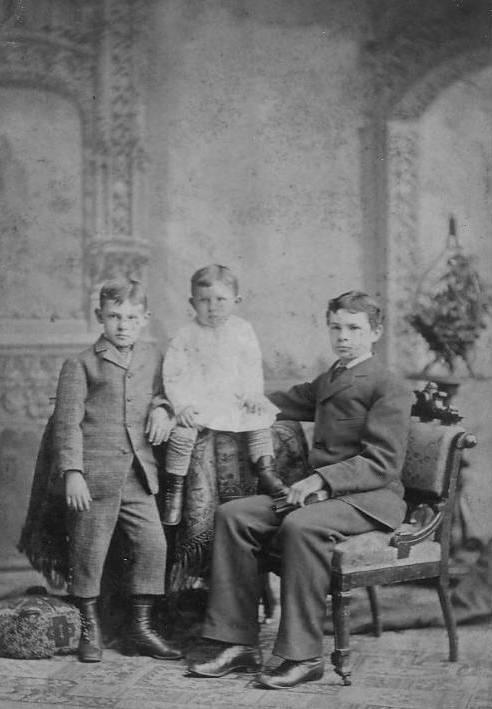
United States Age Gradeing: Approaches

Figure 1.--These unidentified brothers were from Pittsburgh, Pennsylvania. The cabinent card portrait is undated, but looks to have been taken in the 1870s. Mother has used both approaches to age gradeing. The first was dressing the boys in different outfits. The younger boy wears a white dress and striped long stockings while the older boys wear suits. This second approach is minor variations. Here the two older boy are diferentiated bu dressing the younger boy in knee pants. The long length of the kneepants is characteristic of the 1860s and 70s, but this cabinnt card looks more like the 70s.
|
|
There were different approaches to age gradeing useing clothing. Many mothers focused exclusively on clothing. Many age associated clothing conventions these have varied over time as well as the populatrity of age-graded clothing itself. This varied with the size of the family. Thus we see families with several children altering the outfits to some extent varying on the child's age. This convention is in contrat to another popular convention, dressing the children identically. The two basic approaches were making minor changes in the boys outfits to signal age leels. This was commonly done with items like collars and bows. The other basic system was to choese entirely different outfits for boys of different ages. Younger boys might wears dresses, kilt suis, tunic, or sailor suits. Older boys would wear standard sack suits.
HBC

Navigate the Boys' Historical Clothing Web Site:
[Return to the Main age gradeing clothing pages]
[Return to the Main Age Convention page]
[Return to the Main U.S. Fashion Convention page]
[Return to the Main U.S. country page]
[Introduction]
[Activities]
[Biographies]
[Chronology]
[Clothing styles]
[Essays]
[Bibliographies]
[Contributions]
[FAQs]
[Glossaries]
[Images]
[Links]
[Registration]
[Tools]
[ Boys' Clothing Home]
Created: 12:22 AM 7/16/2008
Last updated: 12:22 AM 7/16/2008



